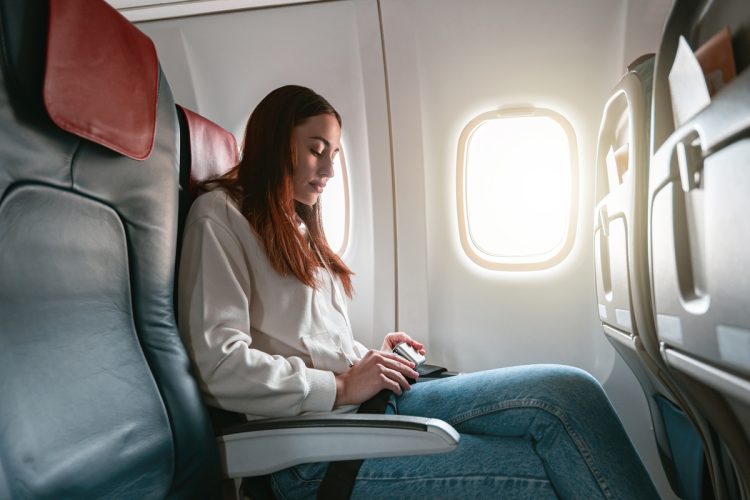An In-Depth Analysis of Spirit Airlines Stock: Opportunities and Risks in the Low-Cost Carrier Market

model. Known for offering no-frills, budget-friendly flights, Spirit has attracted a certain type of customer — those willing to forego some traditional comforts in exchange for cheaper fares. This article delves into the intricacies of Spirit Airlines stock, exploring its performance, industry challenges, competitive advantages, and future prospects.
1. Company Overview
Spirit Airlines, Inc., headquartered in Miramar, Florida, was founded in 1980 and has steadily grown to become one of the largest low-cost carriers in the United States. The airline’s focus on low-cost operations allows it to serve budget-conscious travelers, making it a strong competitor in the U.S. domestic market, as well as in select international markets, particularly in the Caribbean and Latin America.
Spirit Airlines is known for its à la carte pricing model, where customers pay a base fare and then choose to add extra services, such as checked baggage, seat selection, or onboard refreshments. This strategy has enabled the airline to keep its base fares low while generating additional revenue through ancillary fees.
2. Stock Performance Overview
Spirit Airlines’ stock (NYSE: SAVE) has experienced significant fluctuations over the years, influenced by both internal factors such as operational efficiency and external factors such as fuel prices, regulatory changes, and broader economic conditions. Before diving into specific metrics, it’s crucial to highlight the company’s stock market journey, particularly in comparison to its peers like Southwest Airlines (NYSE: LUV), JetBlue Airways (NASDAQ: JBLU), and legacy carriers like Delta Air Lines (NYSE: DAL).
a. Historical Performance
Historically, Spirit Airlines’ stock has seen substantial volatility. The stock hit its all-time high in mid-2018, following years of consistent growth. This rise was largely attributed to Spirit’s ability to expand its route network and maintain relatively low costs per available seat mile (CASM), a key efficiency metric in the airline industry.
However, like the rest of the airline industry, Spirit faced significant headwinds during the COVID-19 pandemic. As travel restrictions came into play and demand for air travel plummeted, Spirit’s stock plunged, losing a large portion of its market value. By 2020, Spirit had fallen from its pre-pandemic highs of around $55 per share to under $10 per share, reflecting the broader aviation sector’s struggle to weather the global crisis.
b. Post-Pandemic Recovery
As the pandemic began to recede, Spirit’s stock recovered somewhat in 2021 and 2022. Increased vaccination rates, a rebound in domestic travel demand, and federal stimulus programs helped to stabilize the market. However, the recovery has been uneven, with ongoing challenges such as high fuel prices and labor shortages impacting the airline’s operational performance.
3. Competitive Position in the Airline Industry
a. The Ultra-Low-Cost Carrier (ULCC) Model
Spirit Airlines operates within the ultra-low-cost carrier (ULCC) segment, a business model designed to offer the lowest possible base fares while monetizing additional services. Compared to traditional low-cost carriers (LCCs) like Southwest Airlines and full-service carriers like Delta or United Airlines, ULCCs often have lower fixed costs, higher aircraft utilization rates, and aggressive ancillary fee strategies. This allows them to offer fares significantly below the industry average.
While this model has its advantages, such as appealing to price-sensitive customers, it also comes with drawbacks. The ULCC model faces criticism for its limited customer service and amenities, which can affect long-term brand loyalty. Moreover, the à la carte pricing strategy can lead to customer dissatisfaction when passengers feel “nickel-and-dimed” for every additional service, from checked baggage to seat selection.
b. Competitive Landscape
Spirit Airlines competes directly with other ULCCs such as Frontier Airlines and Allegiant Air, as well as with LCCs and full-service carriers. The competition within the ULCC segment is fierce, as companies like Frontier and Allegiant adopt similar pricing strategies and target overlapping markets. In recent years, competition has intensified, with these airlines vying for the same cost-conscious travelers on key domestic routes and expanding international routes.
Spirit also faces indirect competition from budget-focused arms of full-service airlines. Carriers like Delta, American Airlines, and United Airlines have introduced basic economy fares, which offer lower prices but fewer amenities, to capture some of Spirit’s market share. These larger carriers have the advantage of offering loyalty programs and a broader route network, providing them with a competitive edge in terms of customer retention.
4. Financial Performance and Key Metrics
a. Revenue
Spirit Airlines has consistently generated revenue through two primary streams: ticket sales and ancillary services. Unlike traditional airlines, a significant portion of Spirit’s revenue comes from non-ticket sources, including baggage fees, seat selection, food and beverages, and other optional services. This has enabled the airline to offer competitive base fares while maintaining profitability through add-ons.
In the pre-pandemic period, Spirit was known for its strong revenue growth, driven by its expansion into new markets and increasing passenger volumes. In 2019, the airline generated approximately $3.8 billion in revenue, with nearly half coming from ancillary fees.
However, the pandemic caused a dramatic decline in passenger numbers and, subsequently, revenue. In 2020, Spirit’s revenue fell by more than 50%, a trend that mirrored the broader airline industry. By 2021, as travel demand started to recover, Spirit’s revenue began to rebound, but it has yet to fully return to pre-pandemic levels.
b. Profitability and Margins
Spirit Airlines has historically enjoyed strong profit margins compared to legacy carriers, thanks to its low-cost structure. The airline’s focus on high aircraft utilization, fuel efficiency, and ancillary revenue generation has allowed it to maintain relatively high operating margins, even as it offers some of the lowest fares in the industry.
However, profitability has been volatile. Rising fuel costs, labor shortages, and fluctuating demand have impacted the company’s bottom line. In 2021 and 2022, Spirit faced additional pressures due to increased competition and the lingering effects of the pandemic on international travel.
c. Cost Structure
Spirit’s low-cost structure is a critical element of its business model. The airline’s average cost per available seat mile (CASM) is among the lowest in the industry, primarily due to its simplified operations, dense seating configurations, and high aircraft utilization rates.
The airline also has a young fleet, consisting mostly of Airbus A320-family aircraft, which helps reduce maintenance and fuel costs. As fuel is one of the largest expenses for any airline, Spirit has benefited from its fleet’s fuel efficiency, particularly during periods of volatile fuel prices.
Despite these advantages, Spirit’s cost structure is not immune to external shocks. Fuel price volatility, wage inflation, and maintenance expenses can still significantly affect the airline’s financial performance. Managing these costs effectively will be crucial for Spirit’s long-term profitability.
5. Challenges and Risks
While Spirit Airlines has demonstrated resilience and adaptability in a challenging market, it faces several risks that investors should consider.
a. Fuel Price Volatility
One of the most significant risks for any airline is fuel price volatility. Fuel costs represent a large portion of an airline’s operating expenses, and fluctuations in global oil prices can have a substantial impact on profitability. While Spirit’s young and fuel-efficient fleet provides some protection against rising fuel costs, it is still vulnerable to sharp price increases.
b. Economic Sensitivity
The airline industry is highly cyclical, with demand closely tied to broader economic conditions. During economic downturns, consumers are more likely to cut back on discretionary spending, including travel. As a ULCC, Spirit is particularly vulnerable to changes in consumer behavior, as its core customer base tends to be more price-sensitive than those of full-service airlines.
c. Regulatory and Environmental Challenges
Airlines are subject to extensive regulation, including environmental policies, safety standards, and labor laws. New environmental regulations, particularly those aimed at reducing carbon emissions, could lead to higher operating costs for Spirit and other airlines. As governments around the world focus on reducing the aviation industry’s carbon footprint, Spirit may need to invest in more fuel-efficient aircraft or carbon offset programs, which could increase its cost structure.
d. Operational Disruptions
Spirit Airlines has faced operational challenges, particularly in the form of flight cancellations and delays. In 2021, for instance, the airline experienced significant disruptions due to staffing shortages and severe weather, which led to widespread cancellations and customer dissatisfaction. Such disruptions can negatively impact the airline’s reputation and financial performance, as well as result in higher costs related to rebooking passengers and accommodating delays.
6. Future Outlook
a. Expansion Plans
Spirit Airlines has ambitious expansion plans, particularly in underserved international markets. The airline has been steadily increasing its presence in the Caribbean and Latin America, where it sees strong demand for low-cost travel. By continuing to expand its route network, Spirit aims to capture additional market share and diversify its revenue streams.
b. Fleet Modernization
Spirit is also focused on modernizing its fleet, with plans to introduce more fuel-efficient aircraft in the coming years. The airline’s existing fleet is relatively young, which provides an advantage in terms of lower maintenance costs and better fuel efficiency. However, ongoing investments in new aircraft will be necessary to maintain this edge and comply with evolving environmental regulations.
c. Mergers and Acquisitions
In 2022, Spirit Airlines became the subject of significant industry speculation when it was revealed that JetBlue Airways and Frontier Airlines had both made offers to acquire the company. JetBlue eventually won the bidding war, and the acquisition was announced in July 2022. The deal, which valued Spirit at approximately $3





